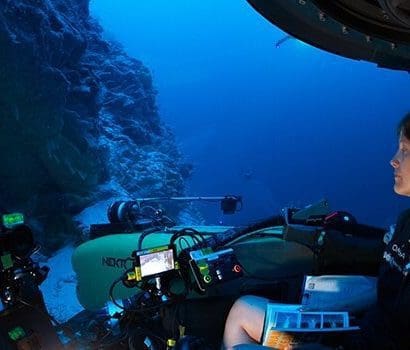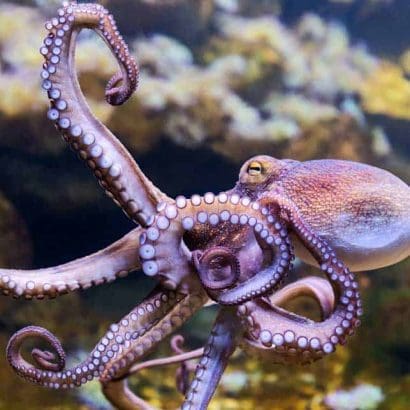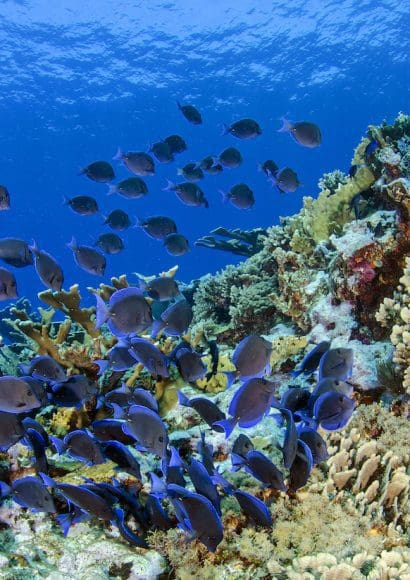
Coral reefs are among the most remarkable and vital ecosystems on our planet. These underwater marvels, formed by the intricate work of tiny organisms known as corals, play a significant role as “architects of the ocean.” Despite their seemingly delicate appearance, coral reefs are resilient and teeming with life, providing a diverse habitat for a myriad of marine species.
In this article, we will delve into the world of corals, exploring their fascinating characteristics, the critical role they play in marine ecosystems, and the challenges they face in the ever-changing ocean environment. Join us on this journey to discover the breathtaking beauty and importance of coral reefs as the architects that shape the oceans.
Contents
What are corals?.🐟
Corals are fascinating marine organisms belonging to the animal kingdom. They are small, soft-bodied animals known as polyps, and they belong to the phylum Cnidaria. Despite their animal nature, corals also engage in a symbiotic relationship with photosynthetic algae called zooxanthellae, which reside within their tissues. This partnership is crucial to the survival of corals and plays a significant role in their ability to build coral reefs.
Corals exhibit a colonial lifestyle, forming colonies made up of numerous individual polyps. Each polyp secretes a hard exoskeleton of calcium carbonate, creating a protective structure around its soft body. Over time, as these polyps reproduce and build their calcium carbonate exoskeletons, they create the awe-inspiring structures we know as coral reefs.
Coral reefs are diverse ecosystems that can span vast areas in the ocean. They can be found in tropical and subtropical regions with warm waters, as these conditions are ideal for the growth and development of both corals and their symbiotic algae. The coral reef ecosystem is one of the most biologically diverse environments on Earth, hosting a vast array of marine species, from colorful fish to intricate invertebrates.
The Anatomy of Corals.🐟
The anatomy of corals is a fascinating study that sheds light on the unique characteristics and complex structures of these marine organisms. Corals belong to the phylum Cnidaria, which includes a diverse group of animals such as jellyfish and sea anemones. Despite their small size, corals are essential contributors to marine ecosystems, forming the building blocks of coral reefs and providing critical habitats for various marine species.
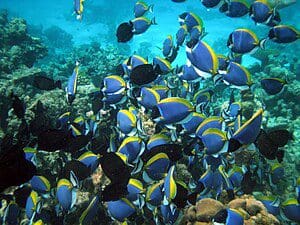
Polyps:
At the heart of the coral’s anatomy is the polyp. Polyps are the individual coral organisms that secrete calcium carbonate to create their hard exoskeletons. These soft-bodied animals have a simple cylindrical or cup-shaped structure with a mouth surrounded by tentacles. The polyp’s mouth serves as both an entrance and an exit for food and waste. It is through this central mouth that the polyp captures tiny plankton and organic matter to sustain itself.
Coral Exoskeleton:
As polyps continue to grow and reproduce, they secrete a hard exoskeleton made of calcium carbonate. Over time, this exoskeleton accumulates and forms the base structure of coral colonies. The exoskeleton not only provides protection for the polyps but also serves as the foundation for the formation of coral reefs.
Symbiotic Relationship with Zooxanthellae:
One of the most remarkable aspects of coral anatomy is its symbiotic relationship with tiny photosynthetic algae called zooxanthellae. These algae reside within the tissues of the coral polyps and provide them with essential nutrients through photosynthesis. In return, the corals offer shelter and access to sunlight for the algae. This symbiosis is the primary reason for the vibrant colors seen in healthy corals and the high productivity of coral reef ecosystems.
Coral Polyp Reproduction:
Corals reproduce in two main ways: asexual and sexual reproduction. Asexual reproduction occurs when a single polyp divides into two genetically identical polyps. This process, known as budding, allows the colony to grow and expand. Sexual reproduction involves the release of eggs and sperm into the water, leading to the formation of larvae. These larvae float in the ocean until they find a suitable location to settle and establish new coral colonies.
Coral Diversity:
The diversity of corals is astonishing, with thousands of different species found worldwide. Some corals form branching structures, while others create massive boulder-like colonies. Each coral species has unique adaptations to thrive in specific environmental conditions, contributing to the overall diversity and resilience of coral reefs.
Coral Reefs as Diverse Ecosystems.🐟
Coral reefs are amongst the most biodiverse ecosystems on Earth, teeming with an astonishing array of marine life. These vibrant and colorful underwater habitats provide crucial shelter, food, and breeding grounds for a vast number of species, making them a treasure trove of biological diversity. Located in warm, shallow waters, coral reefs play a vital role in supporting the health of our oceans and sustaining countless marine organisms.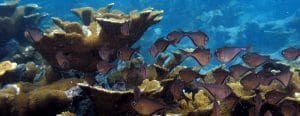
Biodiversity Hotspots:
Coral reefs are often referred to as “rainforests of the sea” due to their immense biodiversity. They are home to an incredible variety of marine plants and animals, ranging from tiny plankton to large predatory fish and majestic marine mammals. It is estimated that about a quarter of all marine species depend on coral reefs at some point in their lifecycle.
Coral Species Diversity:
Within coral reefs, numerous species of corals can be found, each with its distinct appearance and growth pattern. Hard corals, also known as reef-building corals, are the primary contributors to the formation of coral reefs. Soft corals, on the other hand, sway with the ocean currents and come in a stunning array of shapes and colors. Each coral species provides a unique habitat and niche for various marine creatures.
Fish and Invertebrates:
Coral reefs serve as vital nurseries and feeding grounds for an astonishing variety of fish and invertebrates. Many species seek refuge and protection among the intricate structures of the reefs, making them crucial habitats for fish reproduction and juvenile development. The vibrant colors and complex shapes of the corals also attract a wide range of invertebrates, including crustaceans, mollusks, and sea stars.
Algae and Seagrass Beds:
Apart from corals, coral reefs support other forms of marine vegetation. Algae play a significant role in the coral reef ecosystem, providing a primary source of food for many marine organisms. Seagrass beds, often found near coral reefs, act as essential habitats and feeding areas for various species, including dugongs and green sea turtles.
Mutualistic Relationships:
Coral reefs are rich in symbiotic relationships, which contribute to their overall diversity. As mentioned earlier, the symbiosis between corals and zooxanthellae is a prime example. Additionally, certain fish species, like cleaner fish, have a mutually beneficial relationship with larger reef inhabitants, providing cleaning services by removing parasites from their hosts.
Ecological Interdependence:
The diverse array of species found in coral reefs creates complex ecological interactions. Predators rely on prey species for sustenance, while prey species, in turn, depend on the corals and other reef components for protection. This intricate web of relationships fosters ecological balance and resilience within the coral reef ecosystem.
The Ecological Role of Corals.🐟
The ecological role of corals extends far beyond their beautiful appearance; these extraordinary marine organisms play a fundamental role in maintaining the health and balance of marine ecosystems. As “architects of the ocean,” corals create and support one of the most diverse and productive habitats on Earth—the coral reefs. Through intricate ecological interactions, corals contribute to various ecological processes that sustain marine life and influence the overall health of our oceans.
Habitat Creation:
The most prominent ecological role of corals lies in their ability to construct intricate three-dimensional structures, forming coral reefs. These reefs provide shelter, hiding places, and breeding grounds for an astonishing array of marine organisms. The complex architecture of coral reefs offers refuge for countless species, from small invertebrates to large predatory fish and even marine mammals.
Biodiversity Support:
Coral reefs are hotspots of biodiversity, supporting a remarkable variety of marine life. The nooks and crannies of coral formations provide ideal habitats for various species to thrive. Many marine organisms, including fish, crustaceans, mollusks, and other invertebrates, depend on the coral reef ecosystem for their survival at different stages of their lifecycle.
Food Web Contributions:
Corals play a crucial role in marine food webs. The algae living symbiotically within the coral tissues (zooxanthellae) carry out photosynthesis, producing energy-rich compounds. A significant portion of this energy is transferred to the coral polyps, supporting their growth and reproduction. In turn, the coral reefs support a vast array of herbivorous and carnivorous species, forming complex food chains within the ecosystem.
Coastal Protection:
Coral reefs act as natural barriers that protect coastlines from the destructive forces of waves and storms. The complex structure of coral reefs dissipates wave energy, reducing the impact of coastal erosion and buffering the shoreline against storms. This role is particularly crucial for low-lying coastal communities vulnerable to sea-level rise and extreme weather events.
Carbon Sink:
Corals play a role in mitigating climate change by acting as carbon sinks. The calcium carbonate exoskeletons produced by corals during the process of building reefs contain carbon. When corals die and their skeletons settle on the ocean floor, they sequester carbon for long periods, helping to reduce the amount of carbon dioxide in the atmosphere.
Biotic Interactions:
Corals engage in diverse biotic interactions with other organisms in the reef ecosystem. These interactions include symbiosis with zooxanthellae, mutualistic relationships with cleaner fish, and predation-prey dynamics. These intricate connections help maintain the balance and health of the coral reef ecosystem.
Threat Factors for Corals.🐟
Despite their resilience, corals face numerous threats that pose significant challenges to their survival and the health of coral reef ecosystems. Human activities and environmental changes have intensified these threats, endangering the very existence of these essential marine organisms. Understanding these factors is crucial in devising effective strategies for coral conservation and safeguarding the delicate balance of marine ecosystems.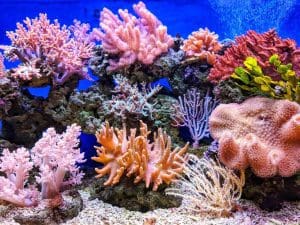
Climate Change:
One of the most pressing threats to corals is climate change. Rising global temperatures lead to coral bleaching events, where corals expel their symbiotic algae (zooxanthellae) due to stress, causing them to lose their vibrant colors and become more susceptible to disease and mortality. Additionally, climate change is linked to more frequent and intense storms that can physically damage coral reefs.
Ocean Acidification:
As the levels of carbon dioxide increase in the atmosphere, a significant portion is absorbed by the oceans, leading to ocean acidification. This phenomenon decreases the availability of carbonate ions necessary for corals to build their calcium carbonate skeletons. As a result, coral growth and skeletal strength are compromised, making them more vulnerable to damage and erosion.
Pollution:
Various forms of pollution threaten coral reefs, including runoff from agricultural activities and urban development, as well as marine debris and chemical pollutants. Pollution can disrupt the delicate balance of coral reef ecosystems, leading to reduced water quality, decreased coral health, and altered species interactions.
Overfishing:
Overfishing disrupts the ecological balance within coral reef ecosystems. Removing key species, such as herbivorous fish that graze on algae, can lead to algal overgrowth on corals, hindering their growth and survival. Additionally, the removal of predators can lead to population explosions of certain species, further disrupting the reef’s biodiversity.
Destructive Fishing Practices:
Certain fishing practices, such as blast fishing and the use of cyanide to catch aquarium fish, cause physical damage to coral reefs. Dynamite fishing destroys large sections of coral reefs and negatively impacts surrounding marine life. These destructive practices can take decades or even centuries for the reefs to recover.
Coastal Development:
Coastal development, including the construction of resorts, ports, and coastal infrastructure, can result in habitat destruction and increased sedimentation and pollution in nearby waters. These activities can directly damage coral reefs and disrupt their fragile ecosystems.
Invasive Species:
The introduction of invasive species can have devastating effects on coral reef ecosystems. Invasive species may outcompete native species for resources or directly prey on corals and other native organisms, leading to significant ecological imbalances.
The Importance of Corals as Architects of the Ocean.
Corals hold a vital role as architects of the ocean, shaping and supporting one of the most diverse and valuable ecosystems on Earth—the coral reefs. Their intricate structures and symbiotic relationships with algae contribute to the creation of these vibrant habitats, serving as crucial shelters, feeding grounds, and breeding sites for a plethora of marine species. Understanding the significance of corals in marine ecosystems is crucial for our planet’s health and the sustainability of coastal communities worldwide.
First and foremost, coral reefs are unparalleled biodiversity hotspots. Their rich variety of species provides an intricate web of ecological interactions, ensuring the balance and resilience of marine life. Countless marine organisms, from tiny plankton to large predators, depend on coral reefs for their survival at various stages of their lifecycles. The extraordinary diversity of corals themselves, along with the range of other species they support, is a testament to the integral role these marine architects play in the natural world.
Moreover, corals have a profound influence on the stability and health of coastal environments. By forming natural barriers against waves and storms, coral reefs protect vulnerable coastlines from erosion and minimize the impact of extreme weather events on nearby communities. The economic value of coral reefs cannot be overstated, as they provide essential resources for fisheries, tourism, and coastal protection, benefiting millions of people worldwide.

